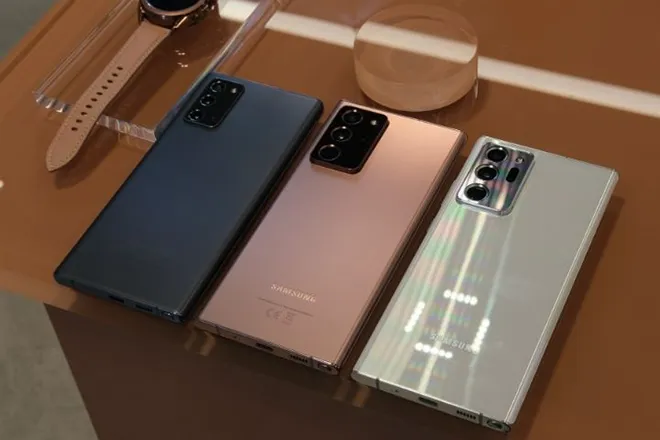Apple’s iPhone series has always been praised for its sleek design, premium build, and cutting-edge technology. However, with the upcoming iPhone 17 series, a surprising issue has caught the attention of early reviewers and tech enthusiasts alike. Reports suggest that the anodized aluminum finish on the new models may be more prone to scratches than expected. This revelation has sparked widespread debate among Apple fans, raising concerns about the long-term durability of the devices.
In this article, we will dive deep into what makes the iPhone 17 series both exciting and controversial, exploring the new design, the scratch issue, Apple’s potential response, and what it means for buyers who prioritize both style and durability.
The Sleek New iPhone 17 Series Design
Apple has always emphasized aesthetics, and the iPhone 17 series is no exception. Featuring a refined anodized aluminum frame, slimmer bezels, and a lighter build, the iPhone 17 lineup looks like a futuristic piece of tech art. The anodization process, which adds a protective oxide layer to aluminum, is typically used to increase durability and resistance to wear.
Yet, despite these promises, early hands-on reviews suggest that the new finish, while gorgeous, might not be as tough as previous generations. The ultra-thin build, combined with a more delicate anodized layer, may be contributing to the increased susceptibility to scratches.

Why the Anodized Finish Scratches So Easily
Anodized aluminum is not new in Apple’s design history—it has been used on MacBooks, iPads, and earlier iPhone models. The process is designed to make aluminum surfaces harder, but it also leaves them vulnerable to visible surface marks, especially when subjected to sharp objects or friction with rough materials.
With the iPhone 17, Apple seems to have opted for a more polished and smooth texture, enhancing the visual appeal but potentially compromising scratch resistance. Some reviewers noted that even placing the phone in a pocket with keys or coins was enough to leave micro-abrasions on the frame.
The User Reactions and Community Debate
Tech forums, social media platforms, and Apple fan communities have been buzzing with discussions about the iPhone 17’s scratch problem. While some argue that minor scratches are inevitable for any smartphone, others believe Apple should have prioritized a more resilient material.
For a device that sits at the premium end of the market, buyers expect not only high performance but also robust durability. Many users are comparing this issue with Apple’s previous “Bendgate” controversy, where the iPhone 6 series faced criticism for being too flexible under pressure.
Comparisons With Previous iPhone Generations
When stacked against earlier iPhone models, the iPhone 17’s durability seems less impressive. For example:
-
iPhone 14 Pro and Pro Max: Stainless steel frames proved much harder to scratch, although they were more prone to fingerprints.
-
iPhone 15 and 16 series: Titanium frames introduced greater toughness, reducing visible damage from everyday use.
-
iPhone 17: While lighter and sleeker, the anodized aluminum finish sacrifices resilience for style.
This shift has raised questions about whether Apple made the right trade-off between aesthetics and practicality.
How Serious Is the Scratch Problem?
While scratches may seem like a cosmetic issue, they can impact the overall user experience. A scratched frame not only looks worn out faster but could also affect the resale value of the device—something Apple users often consider when upgrading.
It’s worth noting, however, that scratches don’t necessarily affect the performance or internal functionality of the iPhone. The A19 chip, advanced camera system, and iOS 19 still deliver cutting-edge performance. Yet for a premium-priced device, even small cosmetic flaws can feel unacceptable to loyal Apple fans.
Apple’s Possible Response
Apple has not officially commented on the scratch reports yet, but historically, the company has been quick to address such controversies. For example, in past situations like “Antennagate” or “Batterygate,” Apple released updates, accessories, or explanations to reassure customers.
Potential responses Apple might take include:
-
Enhancing the anodization process in later production batches.
-
Recommending protective cases or accessories.
-
Marketing the scratches as “normal wear and tear” over time.
Whether Apple chooses to acknowledge this as a design flaw or simply an aesthetic trade-off remains to be seen.

Tips for Protecting Your iPhone 17 From Scratches
For users planning to purchase the iPhone 17, there are several proactive measures to minimize scratch risks:
-
Use a Case – A slim, transparent case can protect the frame without hiding Apple’s sleek design.
-
Apply a Skin or Wrap – Custom skins not only prevent scratches but also add personalization.
-
Avoid Keys and Coins – Never keep your iPhone in the same pocket or bag compartment with sharp objects.
-
Use a Soft Pouch – For extra care, carrying the phone in a microfiber pouch reduces friction damage.
-
Regular Cleaning – Wipe the phone with a soft cloth to remove dust and particles that could cause micro-abrasions.
The Bigger Picture: Do Aesthetics Outweigh Durability?
Apple’s design philosophy has often leaned toward elegance over ruggedness. While other smartphone brands emphasize armored builds and ultra-durable materials, Apple continues to push for slimness and premium finishes.
The iPhone 17’s scratch controversy highlights a broader question in the tech industry: should devices prioritize long-term durability or eye-catching design? Many Apple fans are willing to overlook minor cosmetic issues in exchange for owning a device that feels and looks luxurious. However, others argue that at premium price points, customers deserve both.
Consumer Expectations for the Future
Looking ahead, Apple may need to re-evaluate its approach to materials and durability. With increasing competition from brands like Samsung and Google, durability could become a bigger selling point. If Apple fails to address these concerns, some users might hesitate to upgrade, waiting for sturdier versions in future releases.
The iPhone 17 series continues Apple’s legacy of sleek design, innovation, and cutting-edge technology. Yet, the reports of easily scratched anodized finishes have opened up a debate about whether Apple prioritized style over durability this time.
For consumers, the takeaway is clear: while the iPhone 17 offers exceptional performance and a futuristic design, protecting it with cases, skins, or careful handling is more important than ever. Apple may refine the process in the future, but for now, buyers must balance their love for the device’s elegance with the reality of its fragility.






-1711438526-q80.webp)